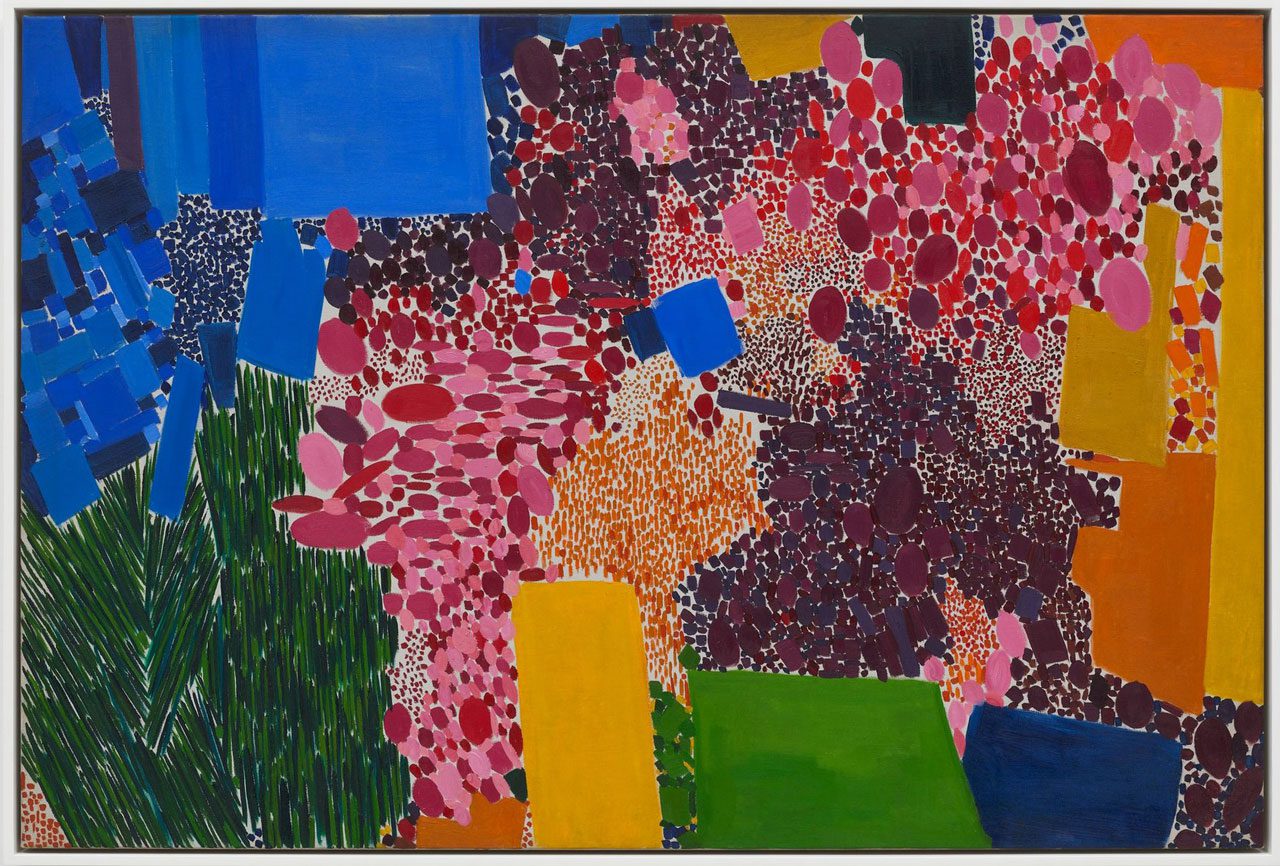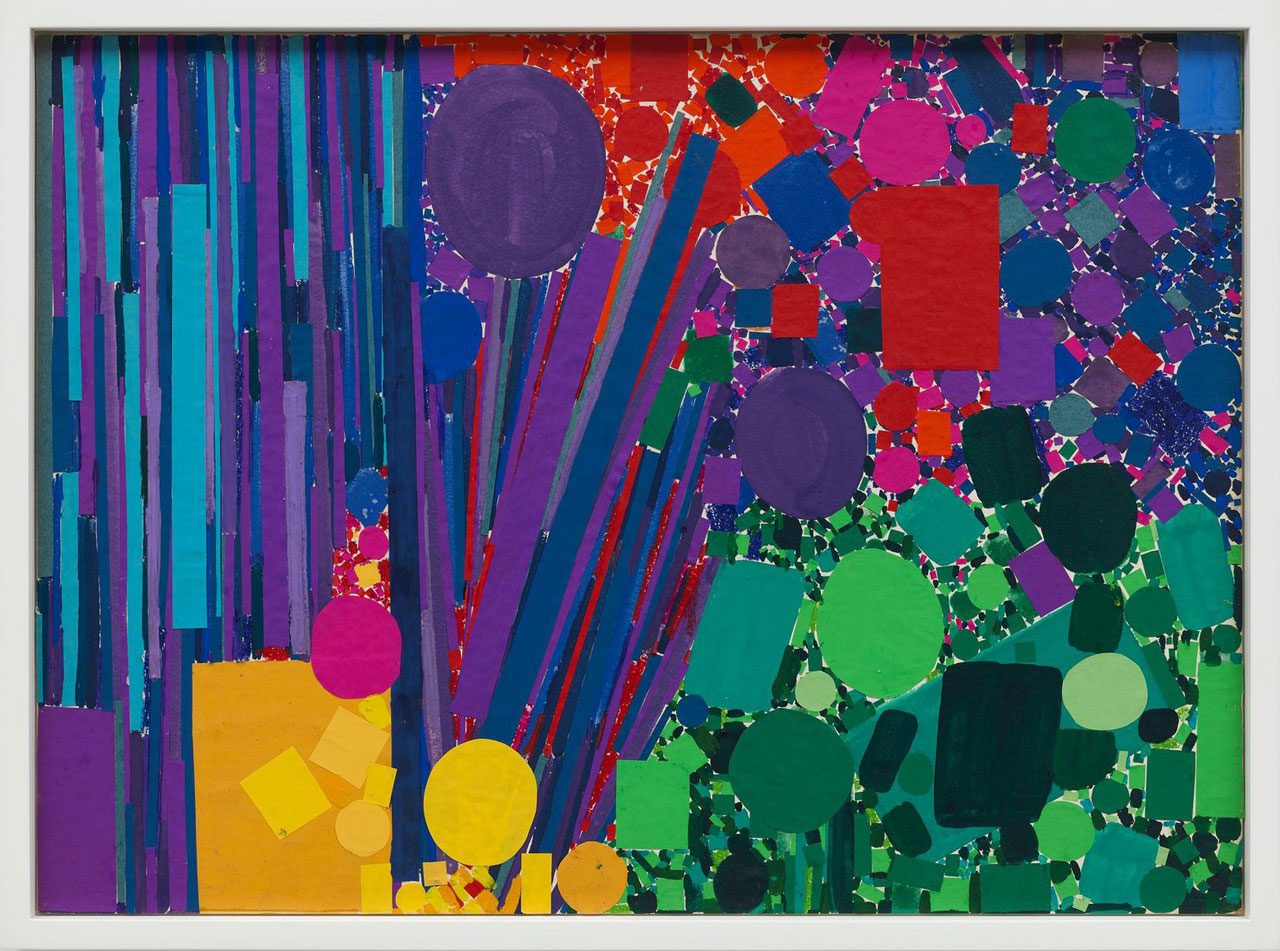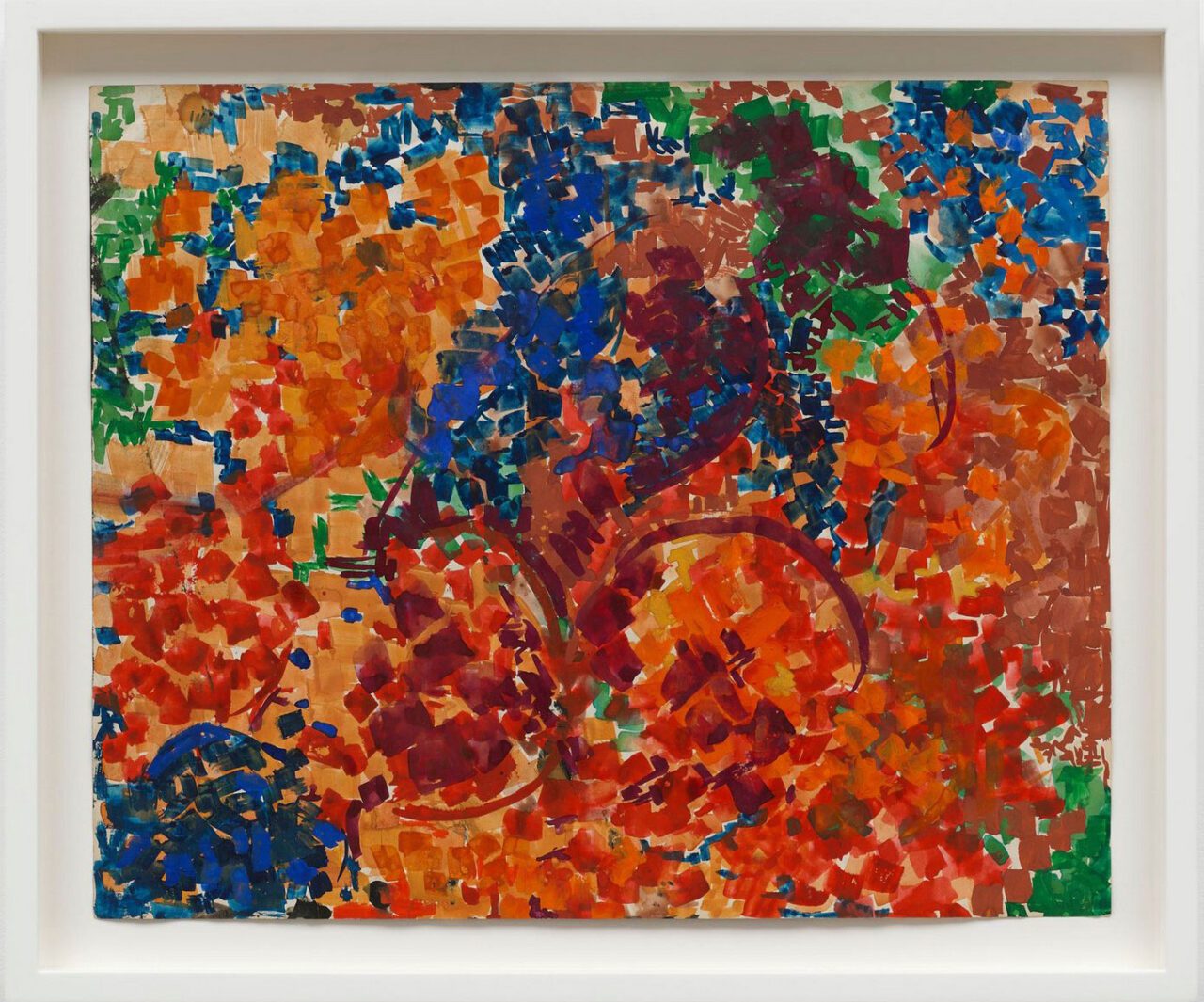ART CITIES: London-Lynne Drexler
 Affiliated with the second-generation Abstract Expressionist movement of the late 1950s and early ’60s, Lynne Drexler’s symphonic and vividly chromatic compositions synthesise a breadth of stylistic influences, merging Impressionism, Fauvism and Pointillism with the ‘Push and Pull’ theory imparted by her teacher, Hans Hofmann. Executed through tessellated rectangles of paint, Drexler’s complex fields of colour emanate an organic, kinetic dynamism that recall her appreciation for nature and classical music.
Affiliated with the second-generation Abstract Expressionist movement of the late 1950s and early ’60s, Lynne Drexler’s symphonic and vividly chromatic compositions synthesise a breadth of stylistic influences, merging Impressionism, Fauvism and Pointillism with the ‘Push and Pull’ theory imparted by her teacher, Hans Hofmann. Executed through tessellated rectangles of paint, Drexler’s complex fields of colour emanate an organic, kinetic dynamism that recall her appreciation for nature and classical music.
By Efi Michalarou
Photo: White Cube Gallery Archive
The exhibition “The Sixties” marks Lynne Drexler’s first major presentation in Europe, and the White Cube Gallery’s inaugural showcase of the artist’s work since announcing representation of The Lynne Drexler Archive in November 2023. Featuring never-before-seen works from the exhibition comprises boldly colored paintings, collages and works on paper made between 1959 and 1969. A significant period within her practice, the exhibition charts certain developments in her work, notably the introduction of the swatch-like brushstrokes for which she is known, as well as her use of geometric forms. Born in 1928 near Newport News, Virginia, in early childhood Drexler demonstrated a precocious aptitude for painting. Nurtured and encouraged by her parents and teachers, she pursued a formal art education, enrolling in painting classes at various institutions across Virginia. Following two extended sojourns to Europe in the early 1950s, Drexler made the pivotal move to New York in 1955, immersing herself in a vibrant and tumultuous art scene where a new vanguard of Abstract Expressionists was reshaping the cultural landscape. In New York, Drexler studied under the tutelage of two leading proponents of the movement: first with Hofmann at his New York and Provincetown summer school, and later with Robert Motherwell at Hunter College. Through their teaching, Drexler was introduced to the formal principles of abstract art, developing a foundational understanding of ways to push form, color and space within her canvases. Drexler shared the fate of many female artists of the post-war era, who were overshadowed by their male peers and counterparts and are only now being reintegrated into the annals of art history. She remained on the periphery of the art world while her husband, the painter John Hultberg, accrued comparable success and fame. In Drexler’s early works, one can discern the origins of her short, intersecting brushstrokes, with gestural echoes of Abstract Expressionism. “Gotterdammerung” (1959), titled after Wagner’s operatic sequence, possesses a mosaic-like intricacy, with unruly accretions of rectangular forms flocking the picture plane, colliding with the immediacy of impasto layering and drips. A later painting, Deep Run (1963), takes on a more geometric direction with elongated striations of purple, yellow and viridian green to isolate the stippled particles of pigment. Echoes of Klimt’s “Bauerngarten” (1907) manifest in the pointillist techniques and botanical allusions of “Flowered Hundred” (1962), while traces of Van Gogh can be read in the swirling vortices of color that compose “A Blossom” (1967). Drexler’s works from this decade trace the path of an artist trialling and refining various modes of painting, endeavouring to forge a distinctive artistic vocabulary. Drexler met the painter John Hultberg at an Artists’ Club party in 1961, and the two married later that year. They established a base in Los Angeles in 1963, where Drexler created a series of lithographs at the Tamarind Lithography Workshop, many of which would be acquired by prominent museums including the MoMA, New York, and the National Gallery of Art, Washington, DC. Later that year, they relocated to Mexico, exhibiting jointly at Galleria in San Miguel. Returning to the United States in 1964, they temporarily settled in Portland, Maine, where Hultberg served as artist-in-residence at the Portland Art Museum, then moving to San Francisco and Honolulu for various teaching positions, before returning to New York in 1967, where they took residence in the Chelsea Hotel – a mecca for artists during that period. By the mid- to late-1960s, the dominant position of Abstract Expressionism was entering a decline, ceding ground to the emerging Pop Art movement in New York. Concurrently, Drexler’s own work was developing away from an AE vocabulary, arriving at her distinctive, more lyrical style in a series of abstract paintings influenced by the landscape. In 1963, Drexler purchased a house with Hultberg on Monhegan Island, off the coast of Maine, utilising it during the summers to escape the bustling social scene in the city. In 1983, Drexler separated from her husband and made a permanent move to the island, remaining there until her death in 1999. The move marked a period of creative transition for Drexler, during which her signature vocabulary of abstract mark-making underwent a transformation, shifting towards a visual language that welcomed trace elements of the island’s dramatic and rugged coastal surroundings, including the coastal landscape and flora of the region. In her later years, Drexler found local renown, exhibiting in galleries on the island and nearby mainland, coalescing a picture of an artist who, despite the shifting currents of the art world, never ceased to create.
Photo: Lynne Drexler, Bayhead, 1981, Oil on canvas, 125.7 x 171.5 cm | 49 1/2 x 67 1/2 in., © The Lynne Drexler Archive, Courtesy White Cube Gallery
Info: White Cube Gallery, 25 – 26 Mason’s Yard, London, United Kingdom, Duration: 27/11/2024-10/1/2025, Days & Hours: Tue-Sun 12:00-18:00, www.whitecube.com/
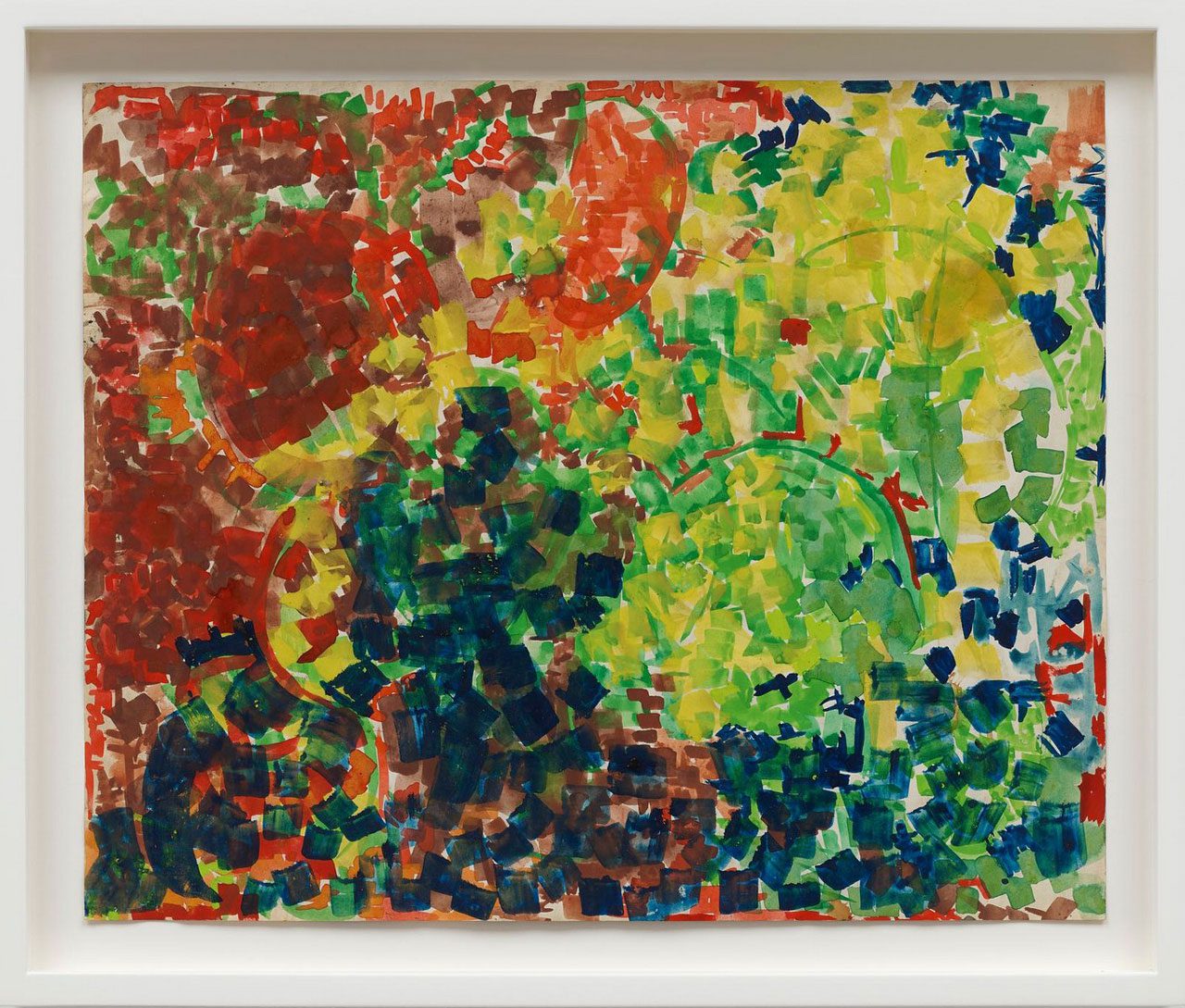

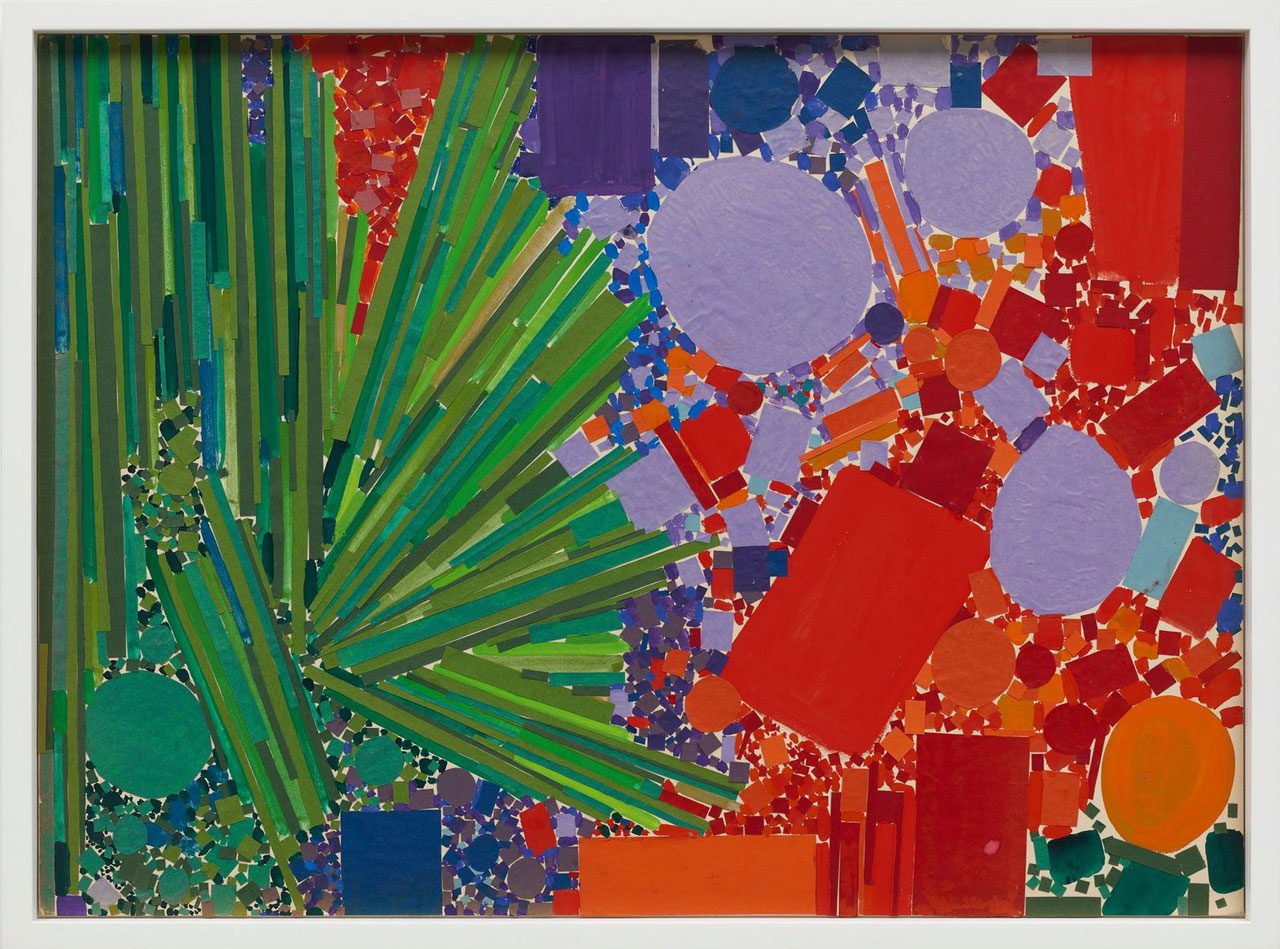
![Left: Lynne Drexler, Hovering Sentinals [sic], 1963, Oil on canvas, 171.8 x 124.8 cm | 67 5/8 x 49 1/8 in., 175.9 x 128.6 x 5.7 cm | 69 1/4 x 50 5/8 x 2 1/4 in. (framed)Right: Lynne Drexler, Changeable Sentinels, 1964, Oil on canvas, 172.7 x 127 cm | 68 x 50 in., 176.5 x 131.1 x 5.4 cm | 69 1/2 x 51 5/8 x 2 1/8 in. (framed)](http://www.dreamideamachine.com/web/wp-content/uploads/2024/11/a231721-scaled.jpg)
Right: Lynne Drexler, Changeable Sentinels, 1964, Oil on canvas, 172.7 x 127 cm | 68 x 50 in., 176.5 x 131.1 x 5.4 cm | 69 1/2 x 51 5/8 x 2 1/8 in. (framed), © The Lynne Drexler Archive, Courtesy White Cube Gallery
